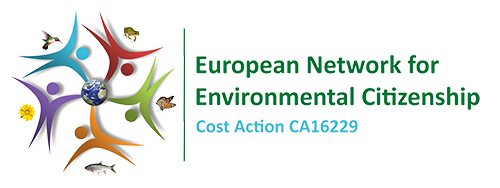Search Results Resources
You have searched in Resources with the following criteria: << Go Back
The search returned 9 results.
Daniela Conti
- From
- 12
- To
- 16
Urban Science – Integrated Learning for Smart Cities
Italian
Italy
- Knowledge
- Skills
- Competencies
- Values
- Attitudes
- Citizenship
- Environmental Citizenship General
- Collective actions
- Actions in Local scale
- Preventing new environmental problems
- Solving environmental problems
- Addressing structural causes of environmental problems
- Practising environmental rights & duties
- Developing healthy relationship with nature
- Inquiry
Over two-thirds of the European population live in cities. Enabling those cities to deliver services sustainably while keeping their citizens safe, healthy, prosperous and well-informed is amongst the most important challenges in this century. The Urban Science European project is an education response to this, to improve the teaching of scientific inquiry and investigation so that students develop the competences to actively contribute to creating healthy cities. Urban Science works through outdoor inquiry-based learning where urban areas become living-laboratories that help students explore how science can create healthier and sustainable places to live. It is solutions based; placing a strong emphasis on creativity and problem solving to ensure scientific understanding can be applied in a meaningful context.
Richard Dawson
- From
- 12
- To
- 16
Urban Science
English
United Kingdom
Daniela Conti
- From
- 12
- To
- 16
Urban Science – Integrated Learning for Smart Cities
Italian
Italy
- Knowledge
- Skills
- Competencies
- Values
- Attitudes
- Environmental Citizenship General
- Collective actions
- Actions in Local scale
- Preventing new environmental problems
- Solving environmental problems
- Addressing structural causes of environmental problems
- Developing healthy relationship with nature
- Inquiry
- Civic Participation
Over two-thirds of the European population live in cities. Enabling those cities to deliver services sustainably while keeping their citizens safe, healthy, prosperous and well-informed is amongst the most important challenges in this century. \r\nThe Urban Science European project is an education response to this, to improve the teaching of scientific inquiry and investigation so that students develop the competences to actively contribute to creating healthy cities.\r\nUrban Science works through outdoor inquiry-based learning where urban areas become living-laboratories that help students explore how science can create healthier and sustainable places to live. It is solutions based; placing a strong emphasis on creativity and problem solving to ensure scientific understanding can be applied in a meaningful context.




